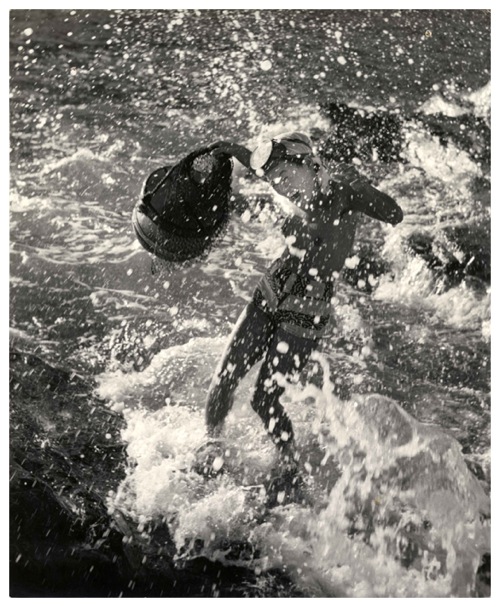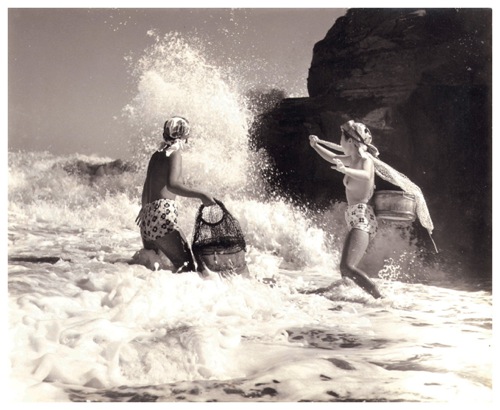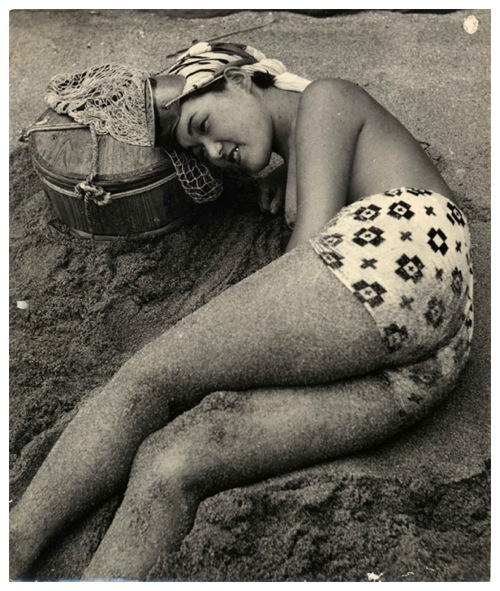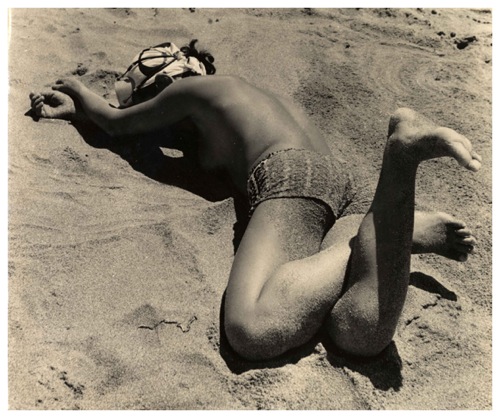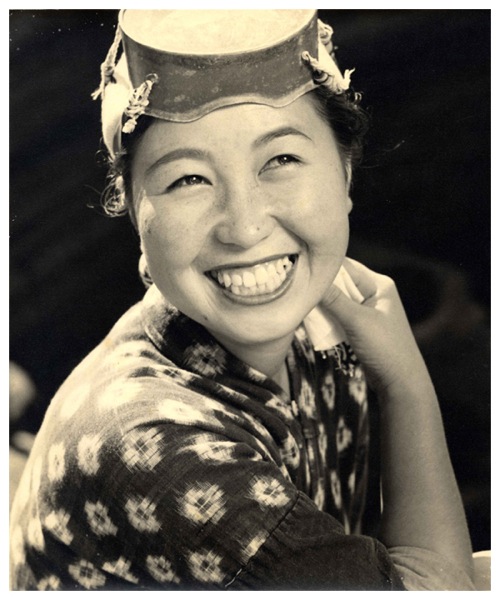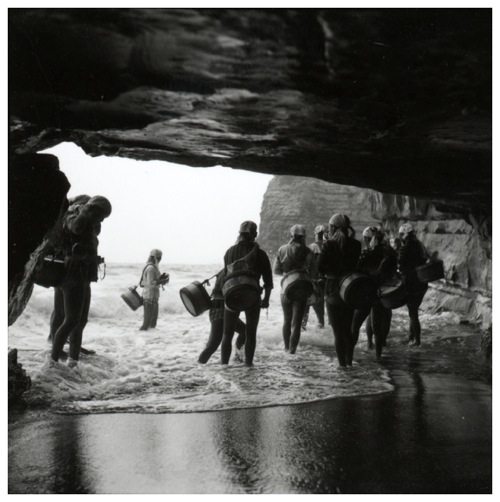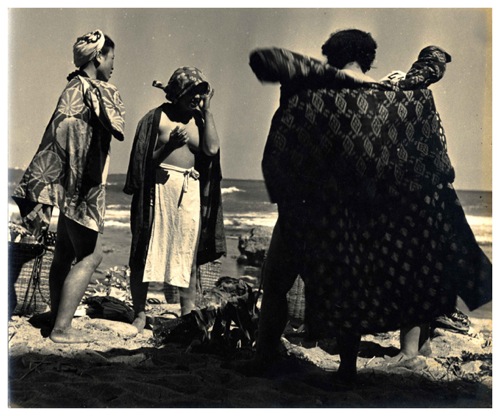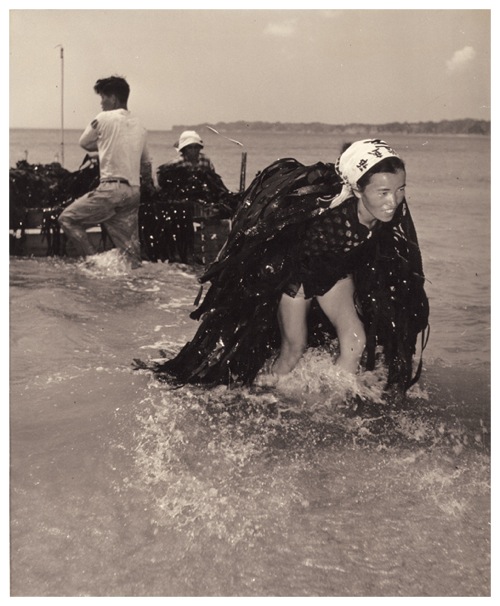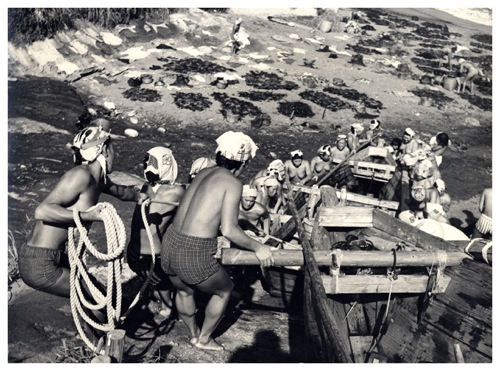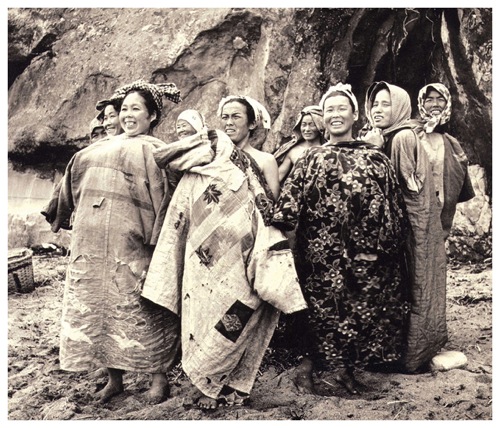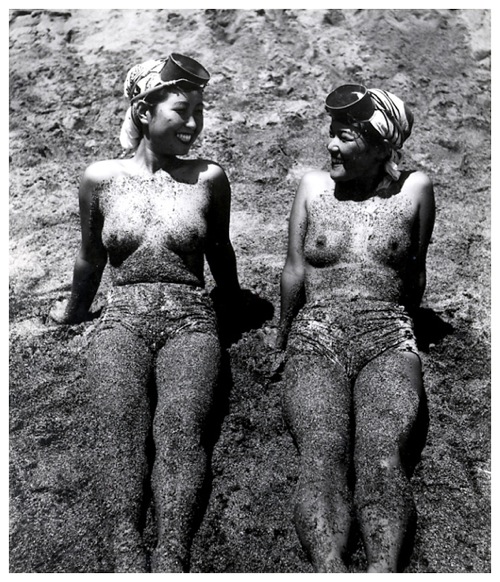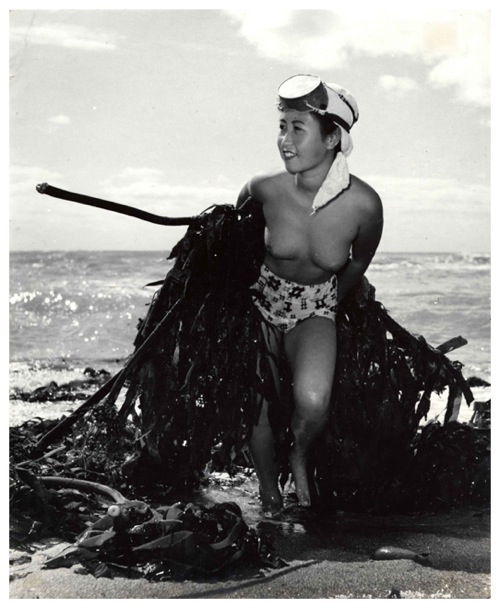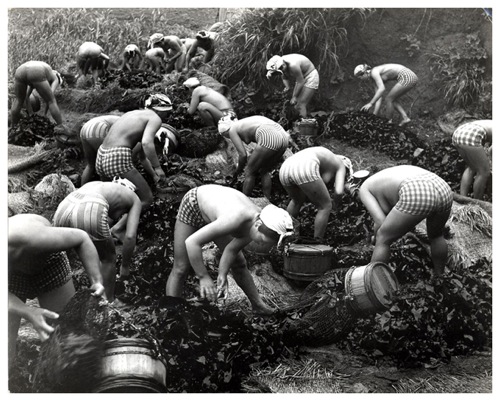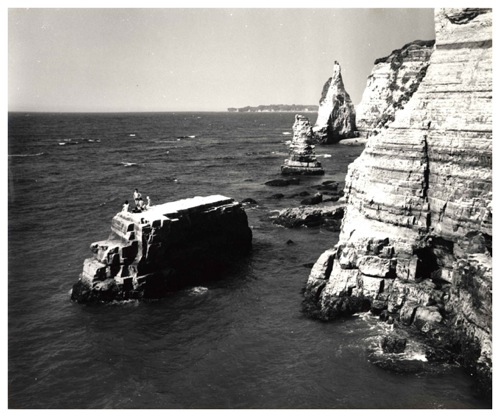岩濑祯之(Iwase Yoshiyuki)
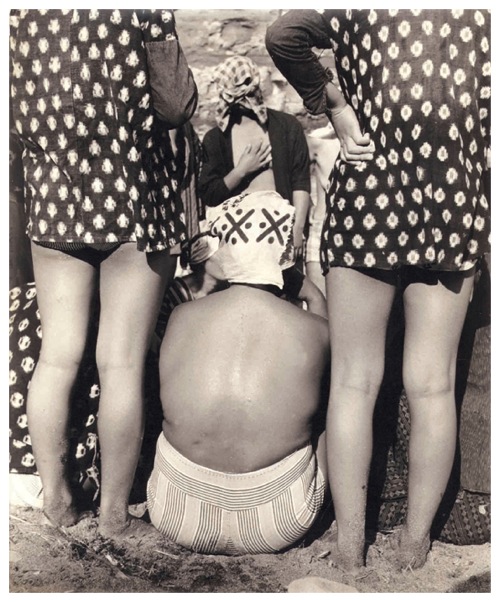
“与海相伴的人们身上充满着喜悦与悲伤……我将自己沉浸在他们的世界里。” ——岩濑祯之。1904年,岩濑祯之出生于东京湾以东的千叶半岛太平洋沿岸的一个叫御宿(Onjuku)的小渔村,1924年从明治大学法学院毕业后,开始了他毕生的追求——一边经营家里的清酒酒厂,一边记录着日本海滨日渐消亡的传统文化。1920年代末,年轻的岩濑祯之收到了一台早期的柯达相机。因为小镇主要的活力都来源于大海,他自然地被吸引到海边,而且很快对那些拥有“简单、几乎是原始的美感”的海女——从水底捕捞海藻、蝾螺、和鲍鱼的女人产生了强烈的喜爱。
“They carried the joys and sorrows of those living with the sea…” …I immersed myself in their world. – Iwase Yoshiyuki. Iwase Yoshiyuki was born in 1904 in Onjuku, a fishing village on Pacific side of the Chiba peninsula, which encloses Tokyo Bay on the east. After graduating from Meiji University Law School in 1924, he took up his lifelong pursuits, heading the family sake distillery and documenting the receding traditions of costal Japan. In the late 1920s, young Yoshiyuki received an early Kodak camera as a gift. Since the main livelihood of the town came from the sea, he gravitated there, and soon found a passion for “the simple, even primitive beauty” of ama – girls and women who harvested seaweed, turban shells and abalone from beneath the coastal waters.
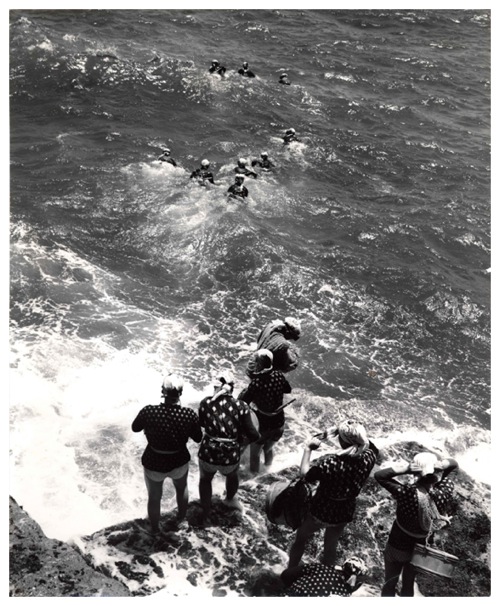
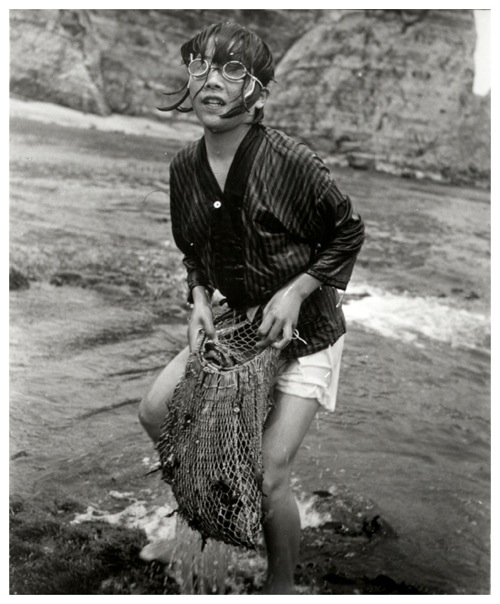
御宿海边的水温只有在每年的六月到九月间较为适宜,而 大浪也无法进行大量的捕捞,所以每年可潜水的天数仅为20天左右。海女每天分三个时段潜水,休息时要大量进食而且必须保暖。一天的捕捞,海女要潜水60至80次,每一次长达两分钟,所以她们必须维持充足的脂肪来防止体温过低。海女可以从如此苛严和危险的工作中得到高额的薪金,她们经常能在一个短季里获得比村里的男人劳作一年更高的收入。1920年代末,大约有200个海女活跃在御宿以及附近的七个港口。到了1960年代末期,她们已经不复存在,岩濑祯之的这一系列作品便成为了关于这些潜水者的最后的,也是最为全面的图像纪录。后来,他的题材扩大至当地的渔民和他故乡的场景,记录了战后日本的传统文化,并且成为了日本现代裸体摄影的先驱。(翻译:文汐)
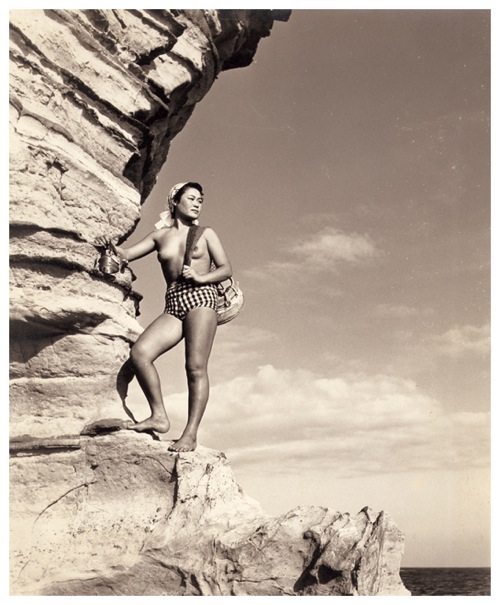
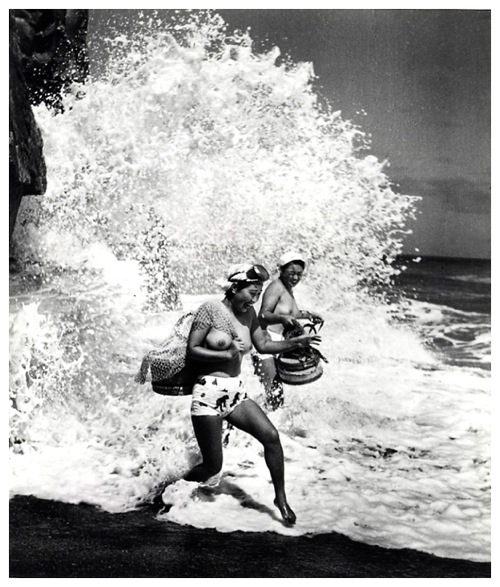
Water temperatures on the Onjuku coast are bearable only between June and September. Large harvests were impossible to haul up in strong currents, so tides had to be favorable, limiting diving days to about 20 per year. Ama dove in three sessions a day, requiring extensive eating and warming at the fireside between runs. A good daily harvest required 60 to 80 dives of up to two minutes each, so ama had to develop and maintain substantial body fat to guard against hypothermia. With such rigors and risks, ama were paid enormous salaries, ofter making more in the short season than the village men made the whole yeah. In the late 1920s, there were around 200 ama active in Onjuku and the seven harbors of the region (Kohaduki, Ohaduki, Futamata, Konado, Tajiri, Koura and Nagahama). By the late 1960s, they had disappeared. This body of work stands as the final, most comprehensive visual document of the life and work of these divers. He became a pioneer of the Japanese modernist nude and documented traditional culture in postwar japan.
